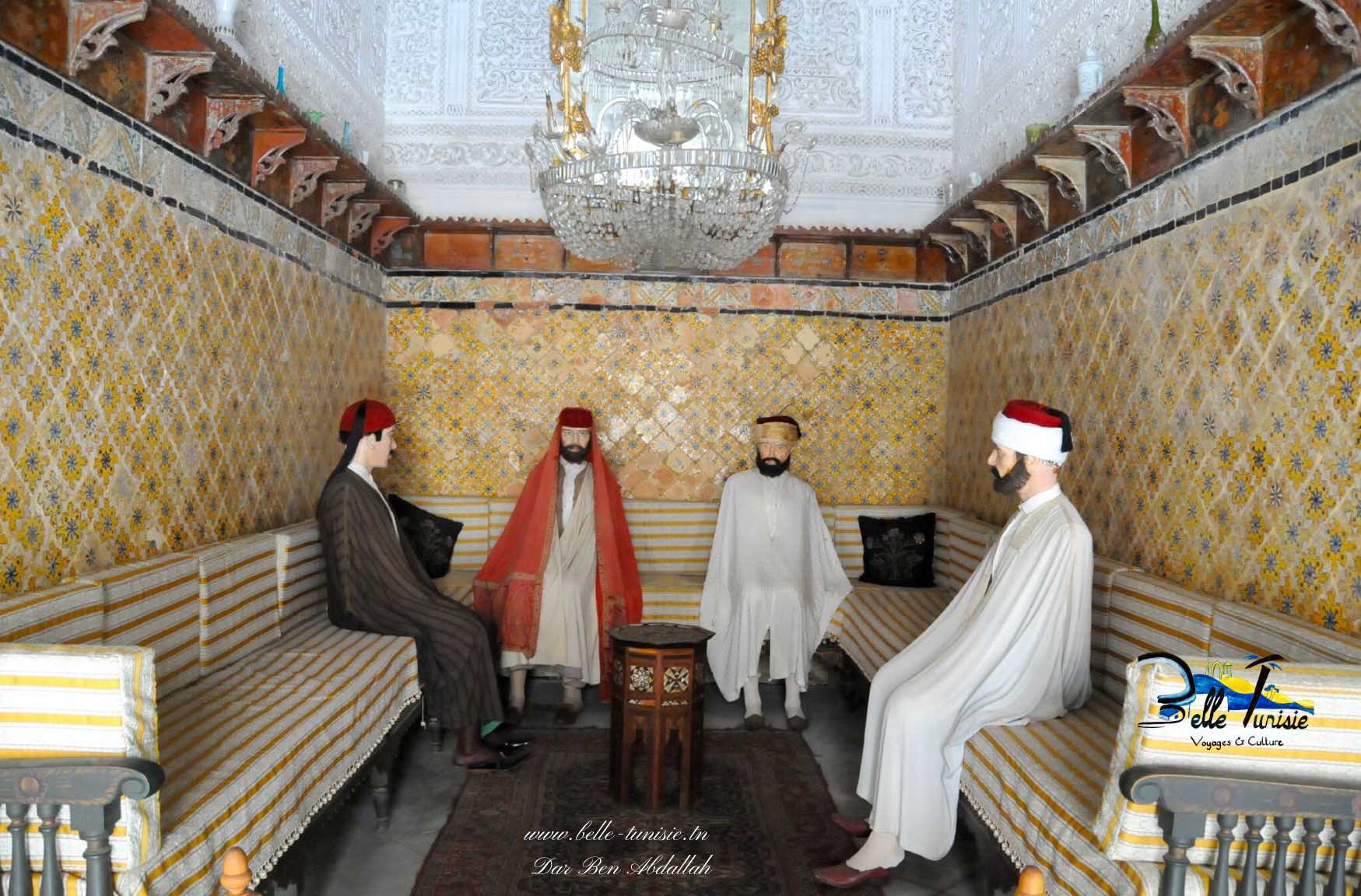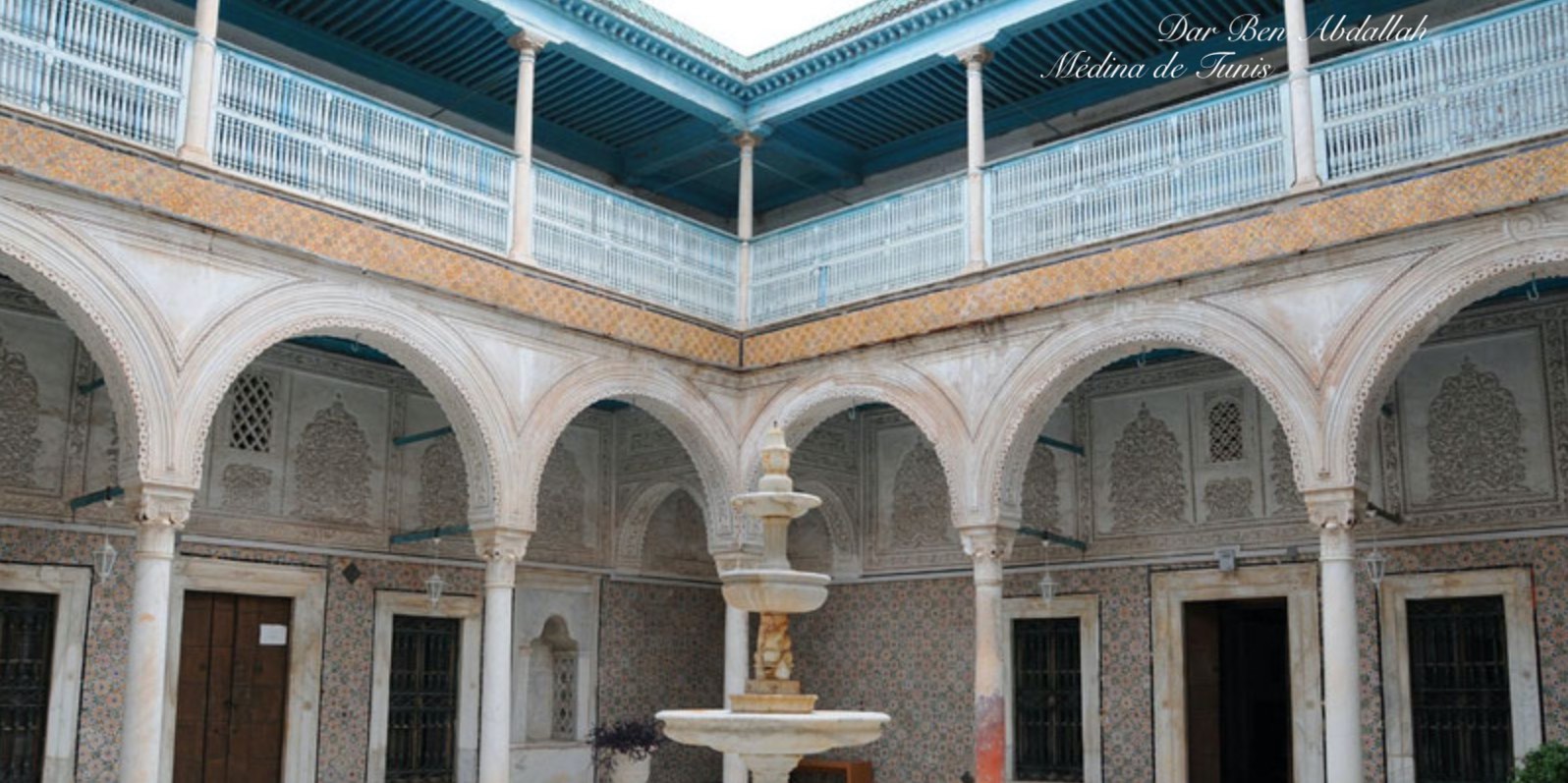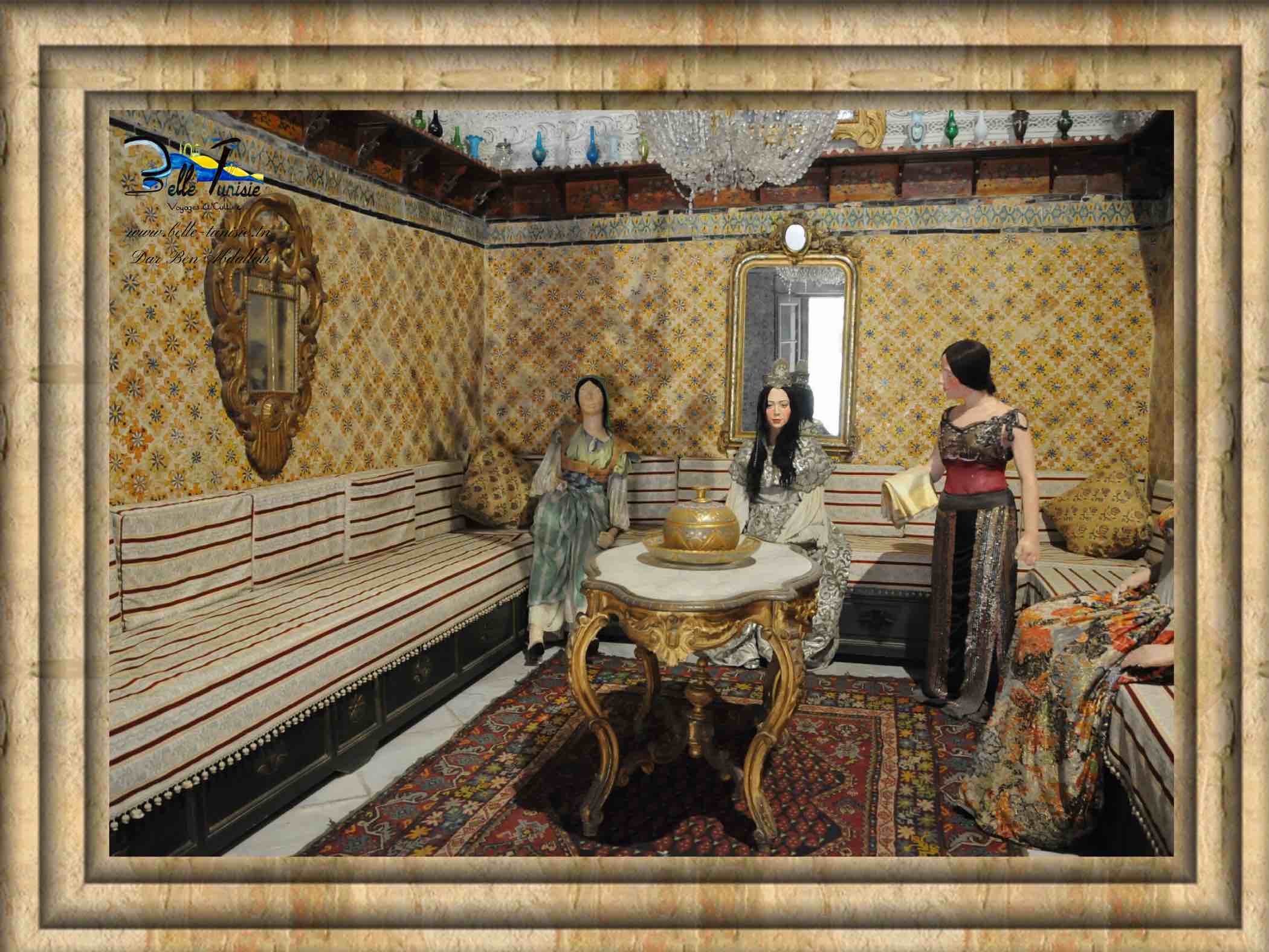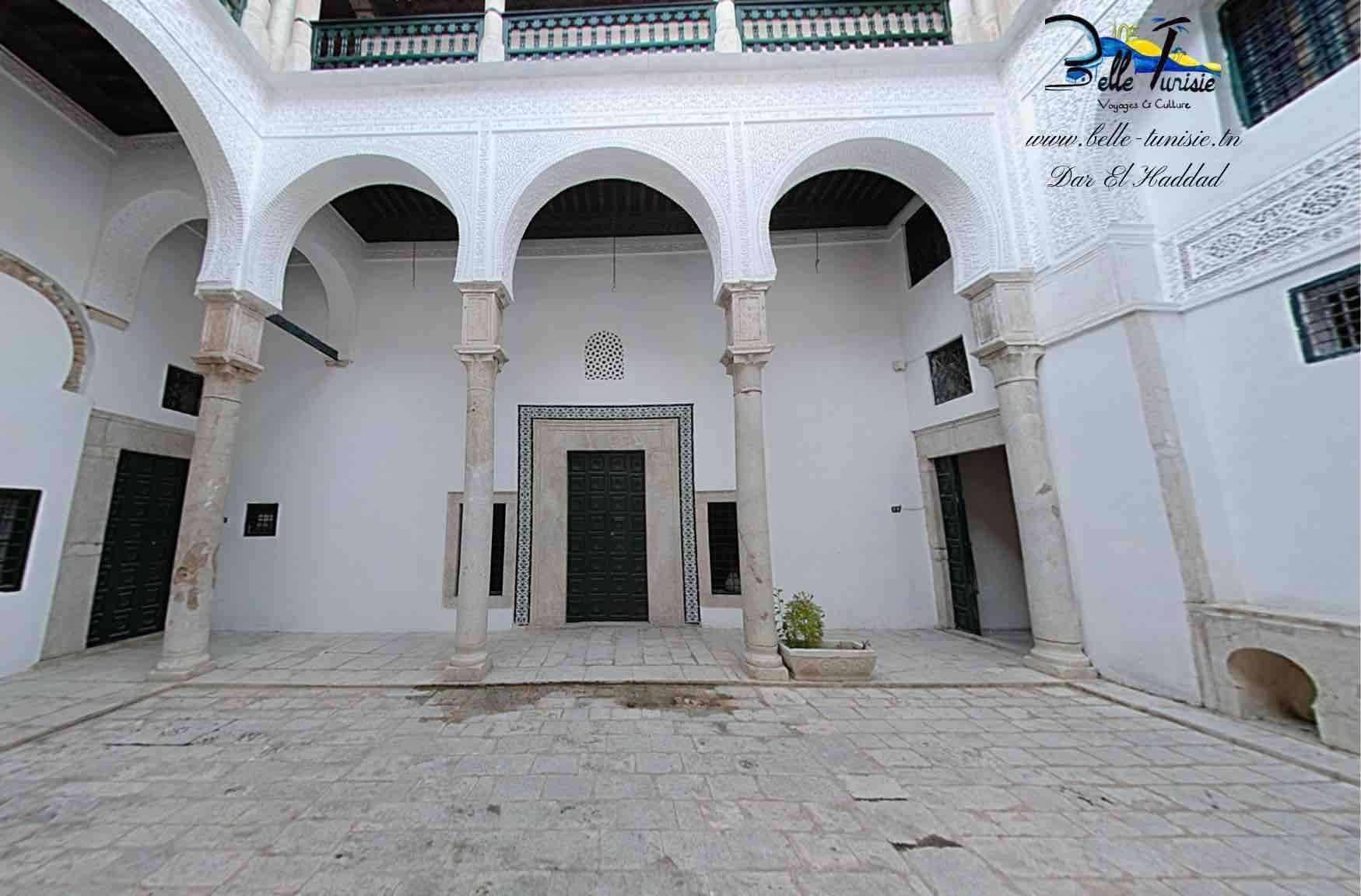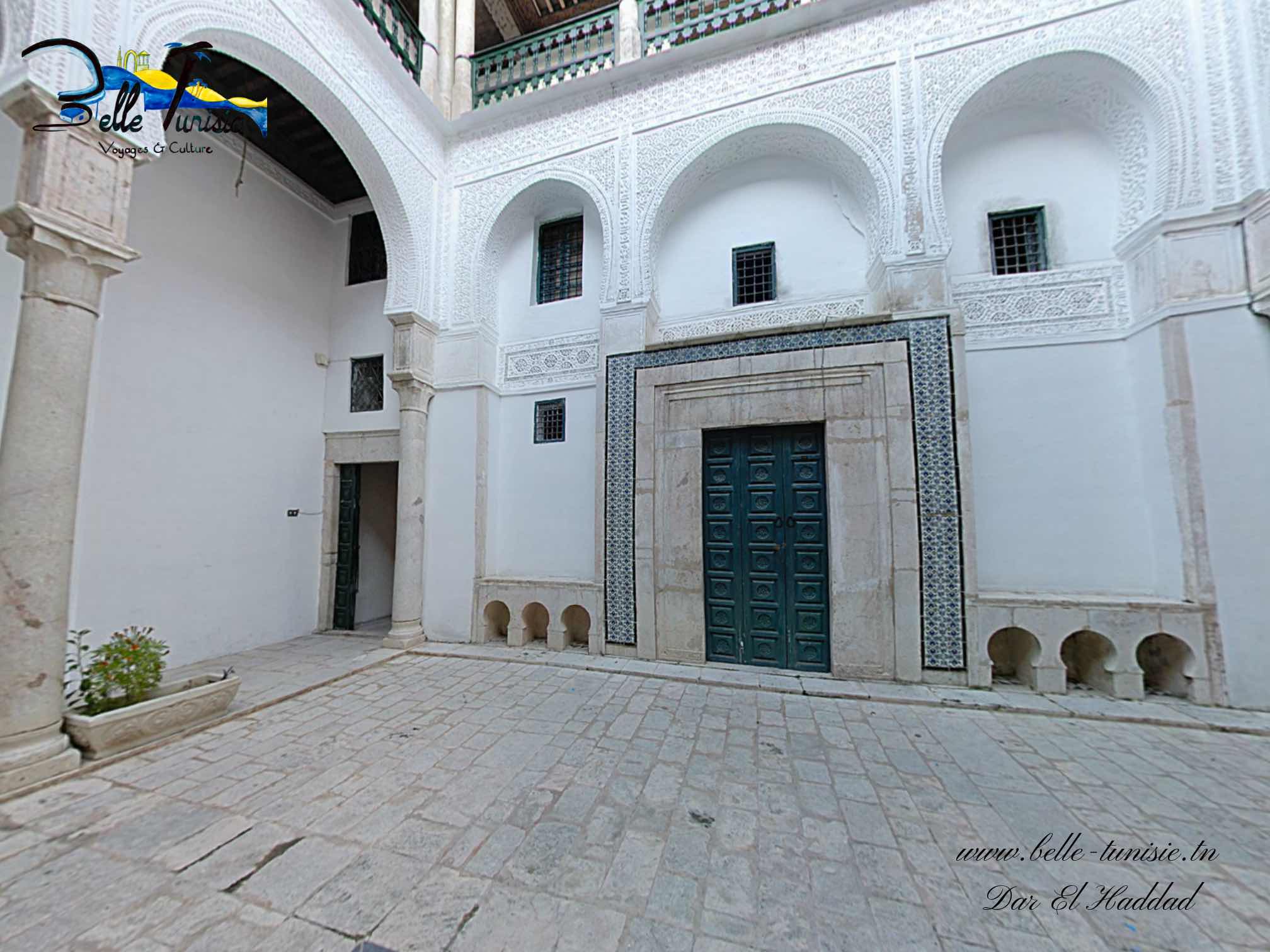Dar El Jeld - دار الجلد
(English version below)
Lorsqu’en 1987 les Abdelkefi décident d’aménager un restaurant gastronomique, à la rue Dar el Jeld, rien ne laissait prévoir le succès du projet tant la Médina était alors marginalisée. Par ailleurs, l’usage de la demeure en tant qu’hôtel à partir de 1948 engendra des transformations abusives : cloisonnements, percements…Il a fallu les talents de l’architecte Mokhtar Derwich et un financement assez substantiel pour restituer à la maison son plan original et à la décoration son éclat.
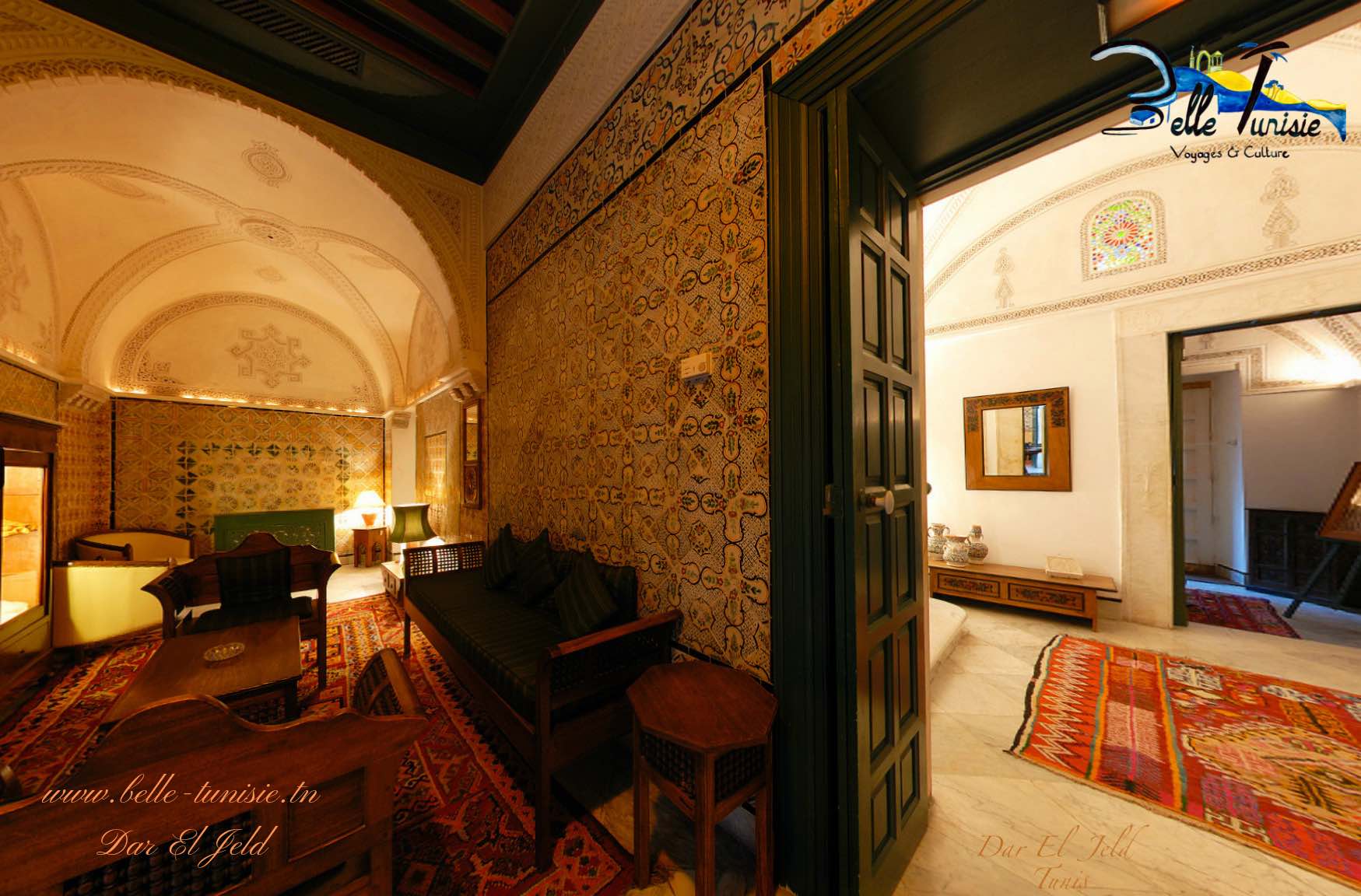
Les sqifa, ces sas de passage souvent mal éclairés, se transforment en un espace d’accueil chaleureux, recevant la lumière de la rue. Leur ameublement, œuvre des ateliers Ken, puise son inspiration de la tradition et reprend les différentes techniques du travail du bois : tourné, sculpté, peint.
Le cheminement en chicane se termine par un salon ‘cosy’ en face d’un comptoir dont il est séparé par une cloison en bois ouvragé.

La cour, à deux portiques opposés, ne diffère pas des autres cours par sa décoration : marbre italien, carreaux de faïence, frise de stuc et pourtant il y règne une ambiance toute particulière. Est-ce l’effet de la douce lumière, atténuée par la toile translucide qui couvre le patio ? Ou est-ce l’élégance des tables où rien n’est laissé au hasard, du luxe des tapis aux fleurs naturelles toujours renouvelées ?
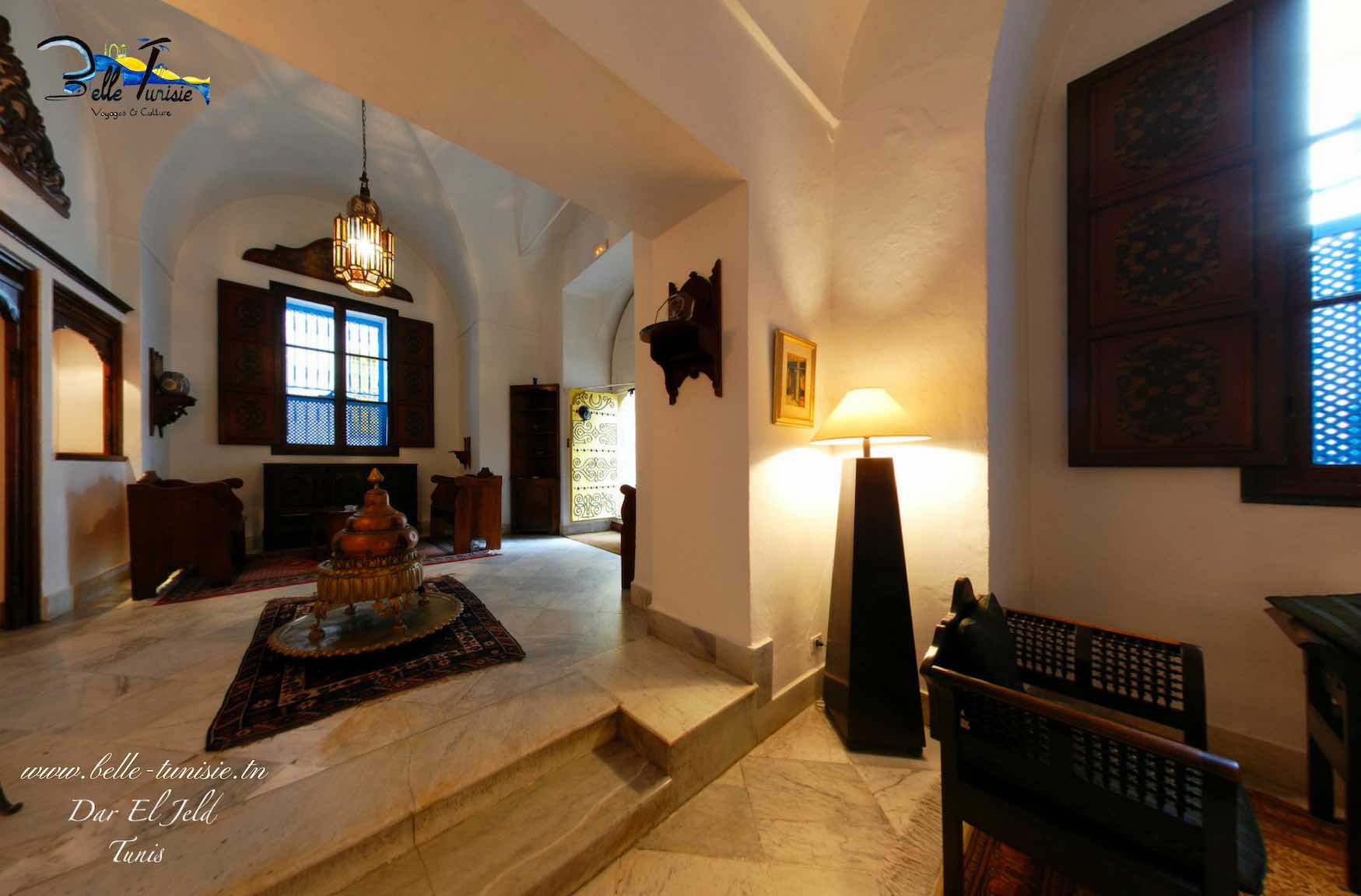
Le nom Dar el Jeld ou maison du cuir, évoque l’histoire de la rue. Celle-ci, il y a trois ou quatre siècles, jouxtait la muraille et par conséquent était assez excentrée. Il n’est pas étonnant d’y voir implanté le Dar el Jeld où étaient traitées toutes les peaux d’animaux dont le fisc détenait le monopole. Après le tannage, le cuir était vendu à l’intérieur du pays ou exporté.

Le monopole du cuir comme celui du tabac, du sel, du savon…était affermé par le gouvernement à des adjudicataires, lazam, qui payaient une somme forfaitaire à l’Etat, à charge pour eux de récupérer leur fond avec un bénéfice, ce qui laissait la porte ouverte à tous les abus.
Pour augmenter leurs profits, les fermiers avaient recours aux fraudes les plus éhontées. On raconte que les agents du lazam jetaient, la nuit, par-dessus le mur d’une maison, une peau. Puis dès l’aube, ils se présentaient pour faire un constat de la contravention et exiger une forte amende. Il était presqu’impossible d’obtenir justice car le gouvernement tolérait ces agissements pour ne pas déranger l’équilibre de son budget.
Contact
Tél: (+216) 70 01 61 90
E-mail: Cette adresse e-mail est protégée contre les robots spammeurs. Vous devez activer le JavaScript pour la visualiser.
Adresse: 5 - 10 Rue Dar El Jeld, Tunis, 1006, Tunisie
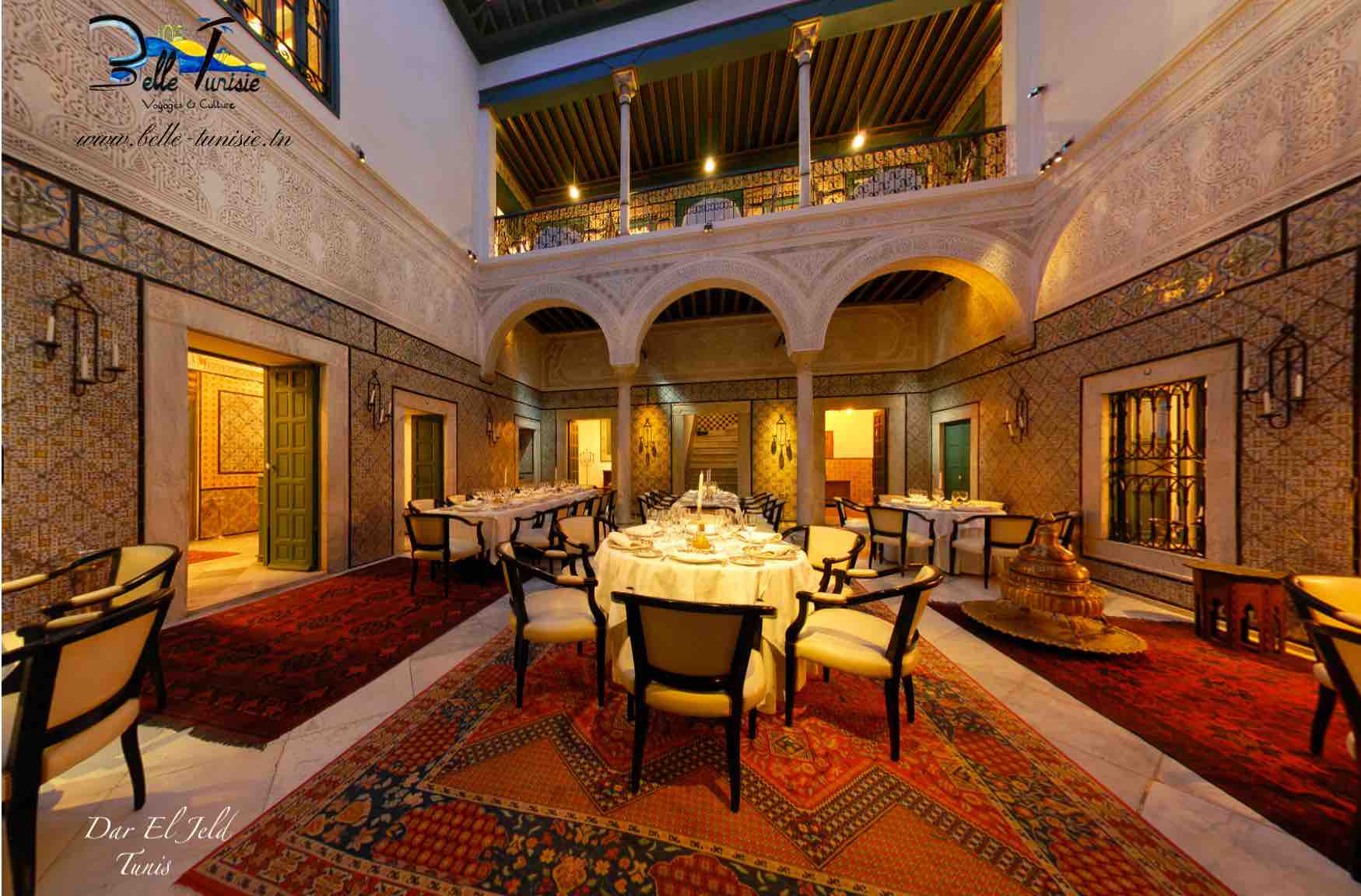
English version
Dar El Jeld - دار الجلد
When in 1987 the Abdelkefi decided to set up a gourmet restaurant on rue Dar el Jeld, nothing suggested the success of the project, as the Medina was marginalized at the time. In addition, the use of the residence as a hotel from 1948 engendered abusive transformations: partitions, openings ... It took the talents of the architect Mokhtar Derwich and a fairly substantial funding to restore the house its plan original and decoration its shine. The sqifa, these often poorly lit passageways, transform into a warm welcome space, receiving light from the street. Their furniture, the work of the Ken workshops, draws its inspiration from tradition and takes up the different techniques of woodworking: turned, sculpted, painted. The chicane path ends in a cozy ’lounge opposite a counter from which it is separated by an ornate wooden partition. The courtyard, with two opposite porticoes, does not differ from the other courtyards by its decoration: Italian marble, earthenware tiles, stucco frieze and yet there is a very special atmosphere. Is it the effect of the soft light, attenuated by the translucent canvas covering the patio? Or is it the elegance of tables where nothing is left to chance, from the luxury of rugs to ever-changing natural flowers? The name Dar el Jeld or leather house, evokes the history of the street. This one, three or four centuries ago, was next to the wall and therefore was quite eccentric. It is not surprising to see the Dar el Jeld located there, where all the animal skins of which the tax authorities held a monopoly were processed. After tanning, the leather was sold within the country or exported. The monopoly of leather like that of tobacco, salt, soap ... was leased by the government to successful contractors, lazam, who paid a lump sum to the State, in charge of them recovering their funds with a profit, which left the door open to all abuse. To increase their profits, the farmers resorted to the most shameless frauds. It is said that the lazam operatives threw a skin over the wall of a house at night. Then at dawn, they would show up to report the ticket and demand a heavy fine. It was almost impossible to obtain justice because the government tolerated these actions so as not to disturb the balance of its budget.
Tél: (+216) 70 01 61 90
E-mail: Cette adresse e-mail est protégée contre les robots spammeurs. Vous devez activer le JavaScript pour la visualiser.
Adresse: 5 - 10 Rue Dar El Jeld, Tunis, 1006, Tunisie

